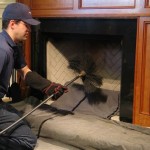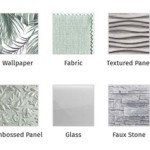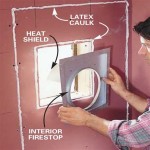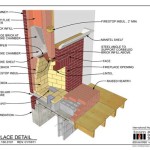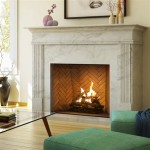Painting Fireplace Stone White: A Comprehensive Guide
Painting a fireplace stone white is a popular renovation project undertaken to brighten a room, modernize a dated aesthetic, or create a focal point. The process, while seemingly straightforward, requires careful planning, meticulous preparation, and the application of appropriate materials to achieve a durable and visually appealing result. This article provides a detailed guide to painting fireplace stone white, outlining the necessary steps and considerations for a successful transformation. It is crucial to understand that the permanence of paint may require multiple future repaintings to maintain the desired aesthetic, and the process may be difficult to reverse.
Understanding the Type of Stone and Its Characteristics
Before embarking on the painting project, it is essential to identify the type of stone comprising the fireplace. Common types include fieldstone, river rock, brick, and manufactured stone veneer. Each material possesses unique characteristics that influence paint adhesion and longevity. Porous stones, such as fieldstone or certain types of brick, require a specific priming process to prevent the paint from being absorbed into the stone, resulting in uneven coverage and a compromised finish. Non-porous stones, like some manufactured veneers, might require a different primer to ensure adequate paint adhesion. Moreover, the texture of the stone plays a crucial role. Heavily textured stones require techniques that ensure the paint reaches all crevices and contours for a uniform appearance. Neglecting to account for the stone's composition and texture can lead to premature paint failure, peeling, or an unsatisfactory aesthetic outcome.
Furthermore, consider any existing coatings or previous treatments applied to the stone. Sealants, waxes, or cleaning agents can impede paint adhesion. A thorough cleaning and preparation process is essential to remove any residue that might interfere with the paint's ability to bond properly to the stone surface. This might involve the use of specialized cleaning solutions designed to remove specific contaminants without damaging the stone itself. A test patch in an inconspicuous area is always recommended to assess the compatibility of the cleaning products with the stone.
Finally, assess the overall condition of the stone. Cracks, chips, or loose mortar joints should be addressed before painting. Repairing these imperfections not only improves the aesthetic of the finished product but also prevents moisture from penetrating the stone and potentially causing further damage. Using a masonry patching compound suitable for the specific type of stone ensures a seamless repair that blends in with the existing surface. Allow the patching compound to fully cure before proceeding with the painting process.
Preparation: Cleaning, Repairing, and Priming the Stone
Preparation is arguably the most critical step in painting fireplace stone white. A poorly prepared surface will inevitably lead to a subpar and potentially short-lived paint job. The initial step is a thorough cleaning of the stone. This involves removing any dirt, dust, soot, or grime that has accumulated over time. A stiff-bristled brush and a solution of warm water and mild detergent are typically sufficient for general cleaning. For more stubborn stains or soot deposits, a specialized masonry cleaner may be necessary. Always follow the manufacturer's instructions for the specific cleaning product being used.
After cleaning, rinse the stone thoroughly with clean water to remove any residual cleaning solution. Allow the stone to dry completely before proceeding to the next step. This drying process can take several hours or even a day, depending on the porosity of the stone and the ambient humidity. Using fans or dehumidifiers can expedite the drying process.
Following cleaning, inspect the stone for any cracks, chips, or loose mortar joints. Use a masonry patching compound to repair these imperfections. Apply the patching compound according to the manufacturer's instructions, ensuring that it fills the gaps completely and is properly smoothed to blend in with the surrounding stone. Allow the patching compound to fully cure before proceeding with priming. The curing time will vary depending on the specific product used and the environmental conditions.
Priming is an essential step that ensures proper paint adhesion and provides a uniform surface for the topcoat. Selecting the appropriate primer is crucial for a successful outcome. For porous stones, a masonry primer or a block filler primer is recommended. These primers are designed to penetrate the pores of the stone, creating a strong bond for the paint. For non-porous stones, an adhesive primer, also known as a bonding primer, is more suitable. These primers create a tacky surface that allows the paint to adhere properly. Apply the primer evenly using a brush, roller, or sprayer, ensuring that all surfaces are adequately covered. Allow the primer to dry completely according to the manufacturer's instructions before proceeding with the painting.
Selecting and Applying the Paint: Ensuring Durability and Aesthetics
Choosing the right paint is paramount to achieving a durable and aesthetically pleasing finish. For fireplace stone, a high-quality latex paint specifically formulated for masonry surfaces is generally recommended. These paints are designed to withstand the high temperatures and fluctuations in humidity associated with fireplaces. Avoid using oil-based paints, as they can yellow over time and are not as breathable as latex paints, potentially leading to moisture buildup within the stone.
Consider the sheen of the paint. A flat or matte finish is often preferred for fireplace stone, as it provides a more natural and less reflective appearance. However, a satin or eggshell finish can be easier to clean and may be more suitable for high-traffic areas. The choice of sheen is ultimately a matter of personal preference.
Apply the first coat of paint evenly using a brush, roller, or sprayer. For heavily textured stones, a brush is often the best option to ensure that the paint reaches all crevices and contours. When using a roller, choose a nap length appropriate for the texture of the stone. A longer nap is better suited for rough surfaces, while a shorter nap is suitable for smoother surfaces. When using a sprayer, follow the manufacturer's instructions carefully and ensure that the spray pattern is consistent.
Allow the first coat of paint to dry completely according to the manufacturer's instructions. This drying time is crucial for proper paint adhesion and to prevent blistering or peeling. Once the first coat is dry, inspect the surface for any areas that need additional coverage. Apply a second coat of paint, again ensuring that it is applied evenly and thoroughly. In some cases, a third coat may be necessary to achieve full coverage and a uniform finish, especially if the stone is particularly dark or porous.
After applying the final coat of paint, allow it to cure completely before using the fireplace. Curing times vary depending on the type of paint used and the environmental conditions. Consult the manufacturer's instructions for specific curing recommendations. Avoid placing any objects on the painted surface during the curing process to prevent damage or uneven drying.
Maintaining the painted fireplace stone involves regular cleaning to remove dust, soot, and other debris. Use a soft cloth or brush and a mild detergent solution. Avoid using abrasive cleaners or scouring pads, as they can damage the paint finish. Touch up any areas that become chipped or damaged over time. With proper care and maintenance, a painted fireplace stone can provide a bright and aesthetically pleasing focal point for many years.
Before undertaking this project, consider the potential impact on the resale value of the property. While painting fireplace stone white can be a popular trend, some potential buyers may prefer the natural look of the stone. It is important to weigh the aesthetic benefits against any potential negative impact on property value. Also, bear in mind that the painted surface may require periodic repainting to maintain its appearance, adding to the long-term maintenance costs.

How To Painting The Stone Fireplace White Greige Design

Stone Fireplace Makeover Part 2 Faux Whitewash Organized Ish

How To Paint A Stone Fireplace True Value

Easy And Affordable How To Paint A Stacked Stone Fireplace Mix Measure Make

Lessons From A White Painted Fireplace Makeover The Inspired Room

Painted Fireplace Place Of My Taste

Painted Stone Fireplace Makeover The Little By Home

To Paint Or Not Stone Tile Fireplace More

To Paint Or Not Stone Tile Fireplace More

Farmhouse Family Room With Painted White Fireplace River Rock Tall Fir Fireplaces Farm House Living Home


